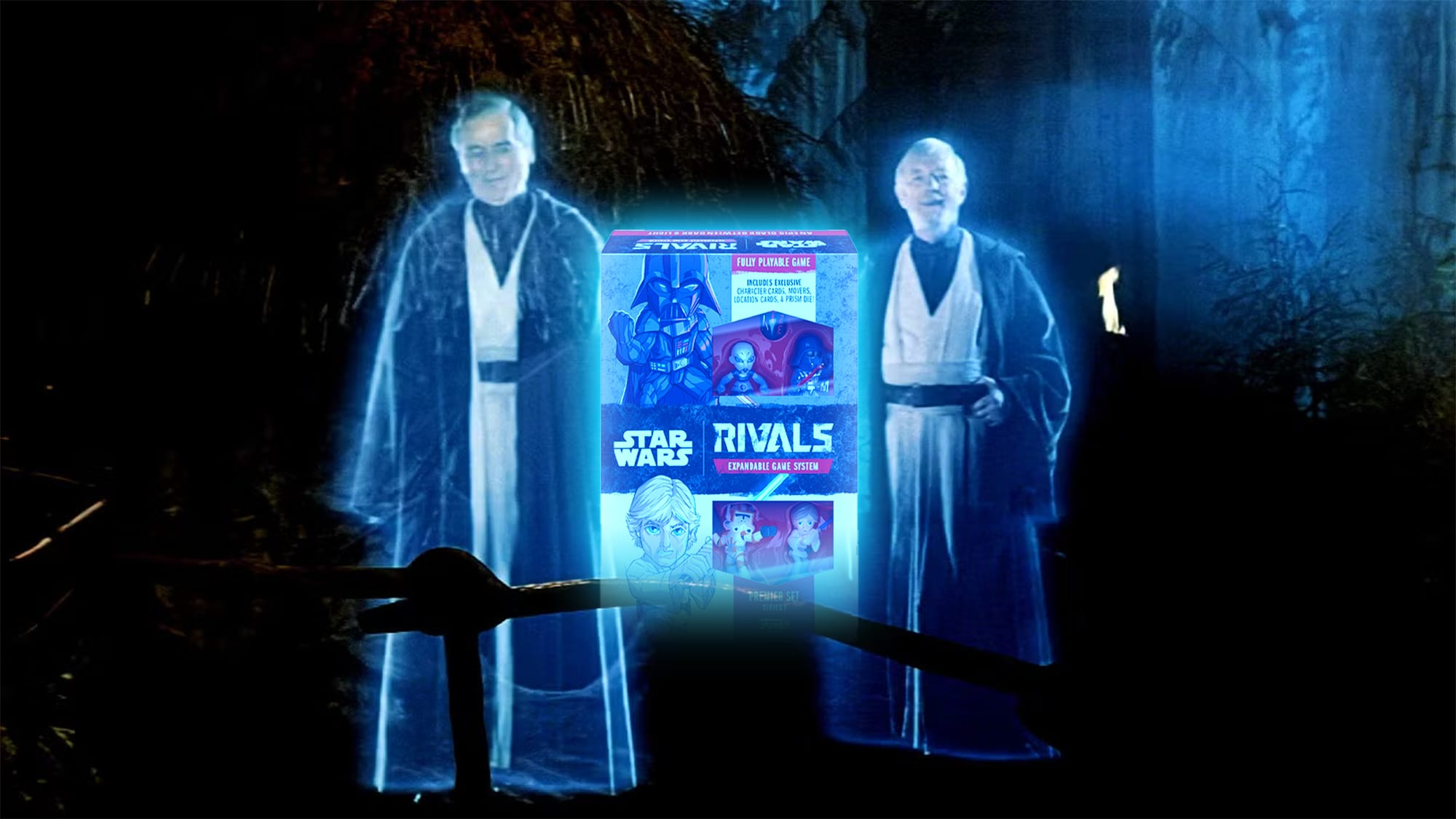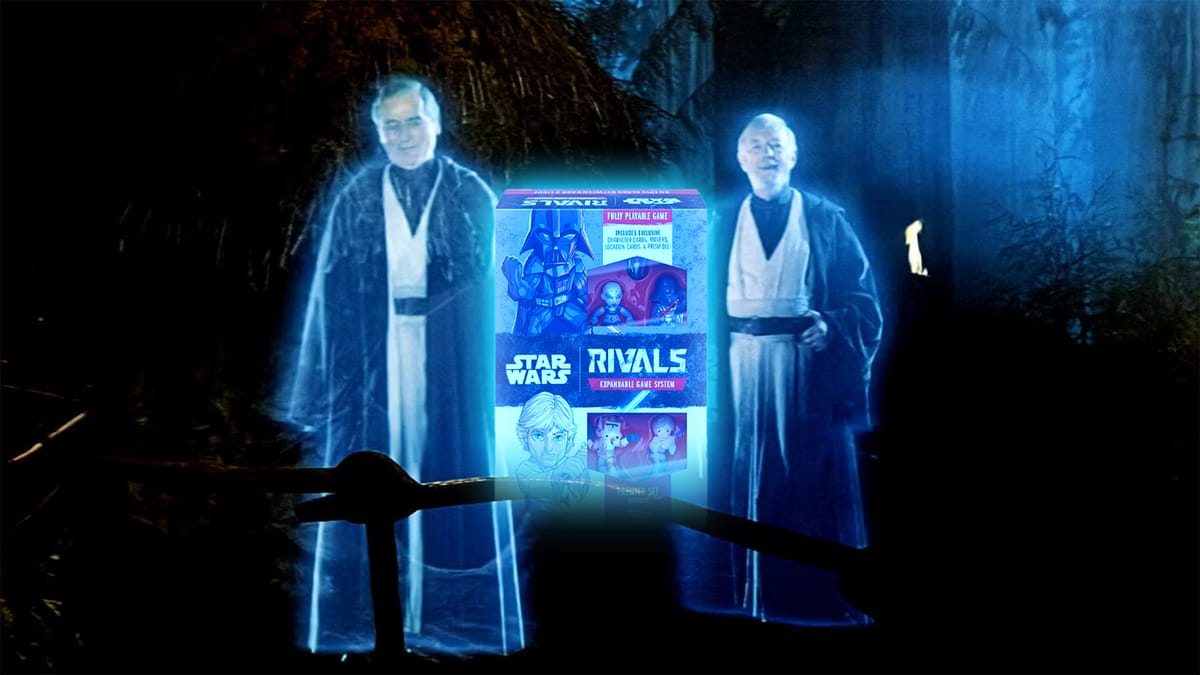
Have you ever heard of the tragedy of Star Wars: Rivals? Funko Games took a lightsaber stab at a hero-villain team-up game called Star Wars: Rivals. It’s an expandable card game that includes Chibi-esq miniatures, dice, and tokens, with a family-friendly, non-violent take on dueling over famous Star Wars locales. In June 2023, Funko Games launched its Star Wars-themed game, with a different style than its flagship Funko Pop style. Meant to be a family-friendly and easy-to-learn game, the game was available to the mass market to appeal to all eras of the Star Wars fans. One of the highlights of their packaging is that all you needed to play was a single booster pack for each player, because you could use the randomly inserted character mover and the two generic trooper tokens as your team. For a whole $5 you could start playing.
Haven’t heard of it? Not surprising. Before we look at what happened, let’s take a look at the game itself.
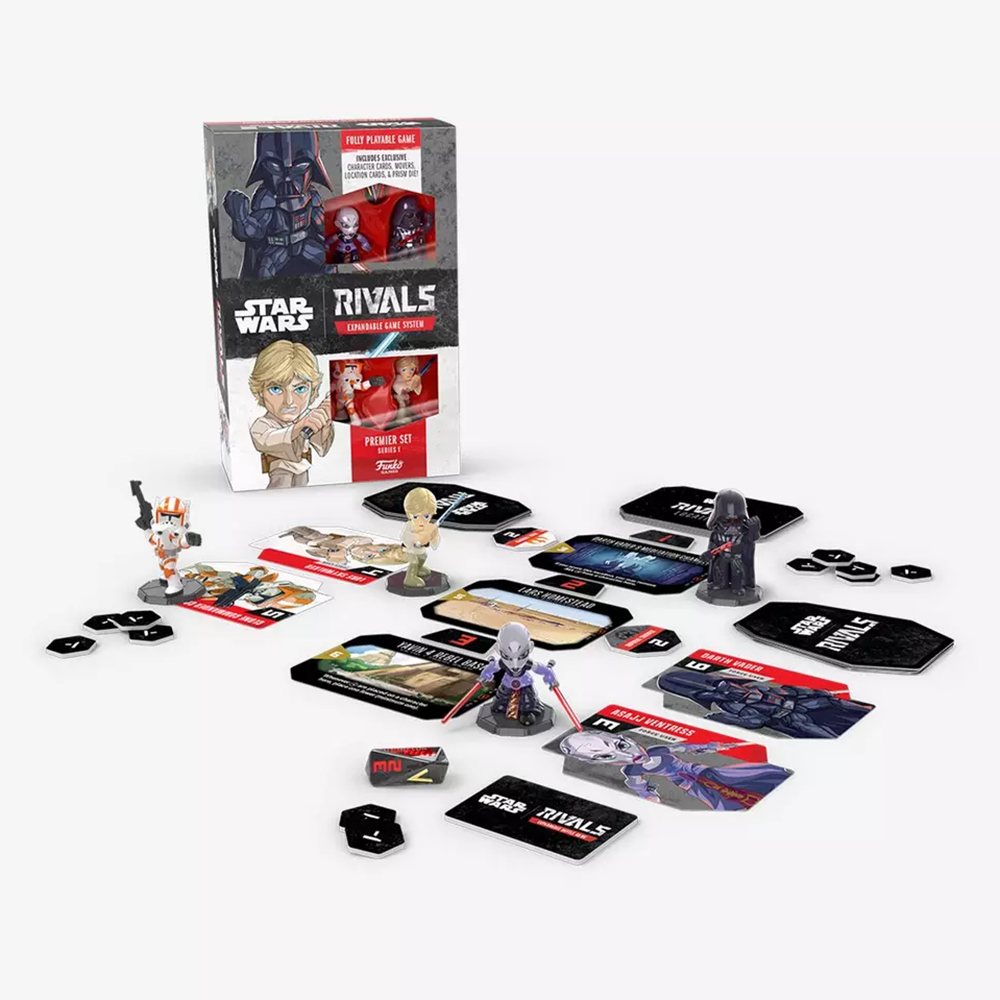
Gameplay
The game was pretty straightforward. Players build a team of three characters and six locations. There is no restriction as to what characters to include other than they have to be on the same side (light side or dark side) and there can only be three. Instead of damage or hit points, characters have an ‘influence’ value, which is tallied during the round to determine which side has the most influence at a given location. So, instead of a game where something gets knocked out, or killed, the game really emphasizes the family-friendly aspect by calling it ‘influence.’ Each character has unique abilities on their action cards that are meant to represent their abilities.
Once you build your teams, both players shuffle their locations together to create a location deck, with three locations placed in the center of the play area. The players take their characters and shuffle all of those character action cards together to form a deck, in which they draw three cards to form their starting hand. Then, starting with the player who has the High Ground (the advantage/priority marker for the game, which is randomly chosen at the beginning of the game), players take turns placing each of their characters at a location. The neat little twist at this step is that, after all the characters are placed, you roll a Rivals-specific die to determine which of the three locations (designated by a 1, 2, or 3 marker) will score this round. Players then choose one of the action cards from their hand and reveal and resolve it, starting with the player who has High Ground. Action cards can increase or decrease influence, move pieces, or draw other cards, and typically only one gets played a turn. After the dust settles from both action cards being played, players who have the highest influence at a scoring location take that location and add it to their score pile, with the next card from the location deck filling the vacant space. The figures are returned, influence markers remain on the characters, a new action card is drawn, and the High Ground marker goes to the opposing player. A new round begins, and gameplay continues until all locations have been scored. Locations themselves have abilities and different score values, and so the player who has the most location points at the end of the game wins.
The team-building is the highlight of the game. In general, the characters are really well balanced. The ones with higher influence usually have very straight-forward cards, whereas the ones with lower influence have a lot of strategical abilities that allow them to manipulate characters or cards more. Many cards have the ability to draw and/or play multiple cards in a single turn, allowing abilities and actions to stack. Some characters have keywords, which can change how they interact with locations on the board (i.e. Jabba’s Palace really favors ‘Scoundrel’ characters, Darth Vader’s Chambers affects ‘Force Users,’ etc.). The other thematically appropriate element worth mentioning is the ‘Bact tank’ zone, which allows characters to recover their lost influence, but at the cost of not being able to score locations. So no character really gets knocked out of the game; they’re simply less effective when scoring locations.
Boom. Simple. A game can take 10-15 minutes if both players are familiar with the rules and their pieces. It’s not about doing damage or KO’ing a character at all; it’s really about being able to play your favorite characters the entire game and using some basic ‘if/then’ strategy to score points. A truly family-friendly game that can be enjoyed by players of any age.
If you want to read the full rulebook for yourself, here’s an archived one.
The Boosters & Collecting
Like any good Funko product, it's collectable, which means that outside of the starter sets, there are boosters containing random figures with different rarities for the set. A clever rarity design was to add in Hologram versions of the characters. (Hologram, Holo… like the short term for holographic, like the rare cards in Pokemon?) Anywho, these characters are identical in sculpt to their regular painted counterparts except they are clear blue plastic, have different card art, and have a mechanic where they allow for the hand size to be 4, instead of 3. Not game-breaking, but a nice little tactical addition.

The boosters come in countertop displays (CTDs), which have 8 light-side and 8 dark-side boosters. Now, whether by intentional design or horrendous oversight, the cases seem to have been packaged into two versions: A and B. All A-version CTDs have the exact same characters, located in the exact same spot within the case itself, and the same is true for the B-version. To complete the set, you need one of each CTD and a starter. So for about $200, two CTDS and a starter, you got the entire series; 30 figures for Series 1 and 28 figures for Series 2, plus some extras to either give away to friends or display elsewhere. As far as comparing it to contemporary trading card games, $200 to get a complete set is beyond an amazingly good deal, especially with pre-painted minis and high quality cards and tokens.
So, what happened?
I don’t think there was any one thing that led to this game going out as quickly as Porkins at the Battle of Yavin, but I think a combination of elements, instead.
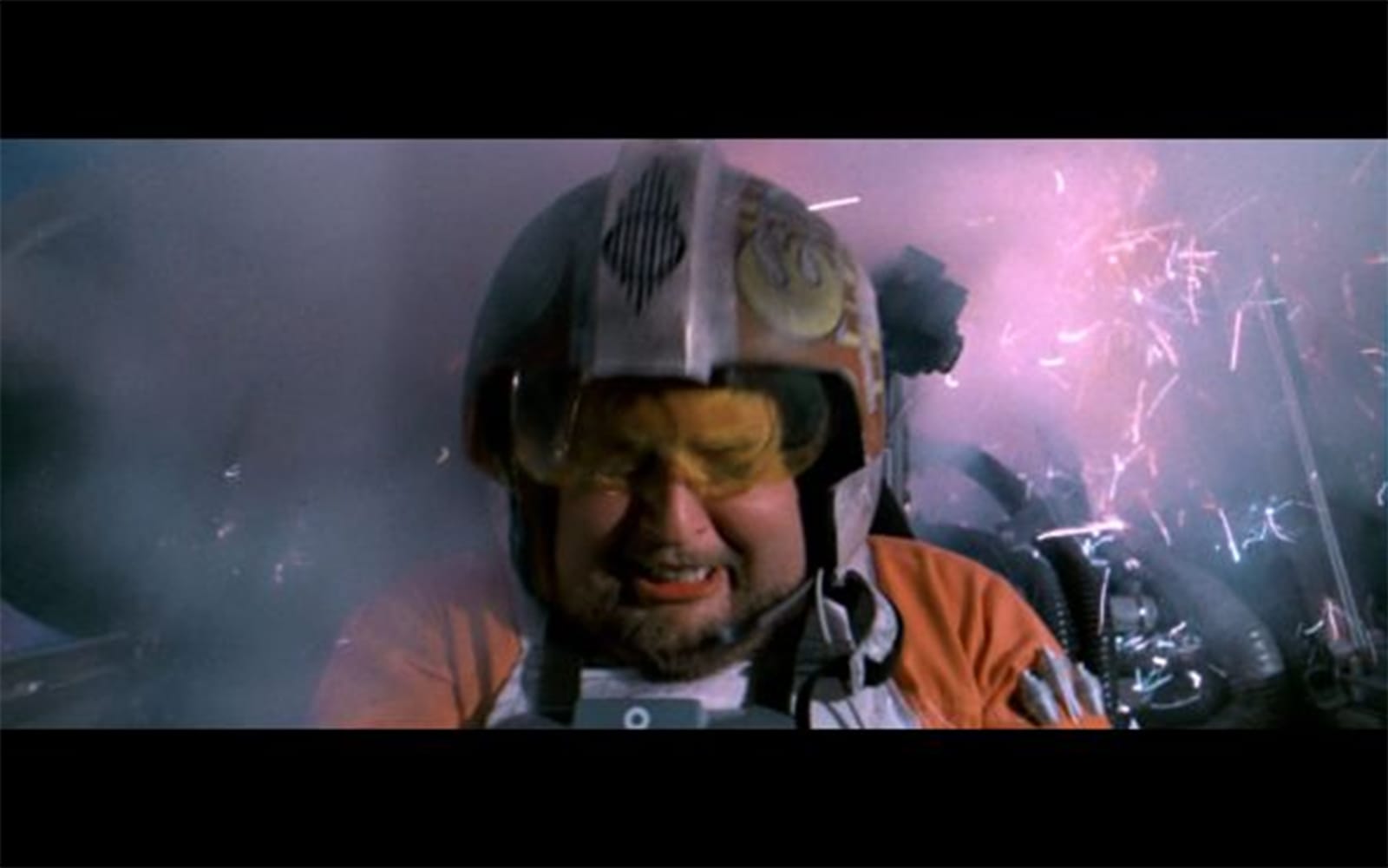
Distribution:
For starters, only the starters were available. This soft launch, while in theory being a good way to test the waters, wasn’t done with the best of timing. Starters were only available online through Funko’s site or through Walmart (Gamestop got them eventually), but the starters were the only product available for a month or two. When boosters did hit the shelves, they were spotty, often mislabeled or, worse still, not even in the right department. I remember seeing posts from people saying they got a whole CTD for $5, instead of each booster for $5. Most Walmarts only got one CTD at a time, so getting an A and B version wasn’t possible unless you racked up some mileage to go to each of your local Walmart. My friends and I hit up all of the 4 Walmarts within 100 miles and only found three CTDs. Funko’s online shop never seemed to be in stock, and they directed people to buy local or from Walmart. There was talk of Rivals being available through your FLGS (friendly local game store), but that never materialized. Fortunately, the first series was reprinted with the second wave having some slightly different collector numbers, as well as some text changes on a few cards. Eventually, some GameStops got some boosters and starters, and it seemed like the growing pains ended. There was enough product going around for anyone to get into it.
Awesome, right? A game that launched and had product for everyone to get into so people weren’t feeling left out and hurt (looking at you, Disney Lorcana...).
GenCon, San Diego Comic Con, and a few other conventions, were even selling some Star Wars Rivals exclusives (classic Funko). The exclusives were two figures, a Wicket and Scout Trooper, who were to appear in Series 2. You could also win a neoprene mat, which is incredibly hard to find now. So, not only did players get two more characters, but they got a glimpse that the game was going to continue. There were many rumors circulating about the arrival of Series 2, which was supposed to release during the 2023 holiday season, but nothing happened.
The business model changed:
In January of 2024, it was announced that Goliath Games was to become the exclusive worldwide distributor of Funko Games. While not an outright bad thing, it was made very clear, very quickly that things were not starting off on a good foot. Some of the Discord and Facebook admins, who were also Funko Games employees, got their pink slip and shared, professionally of course, a little of what was going down. In short, Goliath was taking over, jobs were being cut or merged, the Mouse was doing its thing and being very controlling of their intellectual property, and there were some renegotiations with distributors and shipping. The silver lining at this point was that the designers had confirmed Series 2 had been made. So it was coming out… at some point. By this time, however, Walmarts had started discounting starters of Series 1, and the shelves had been picked clean. So without a Series 2 on the shelf, the game wasn’t really accessible to the mass market. Anticipation surged for Series 2, but communication was sparse and it began to wane. For about 7 months there was nothing. July 2024 Series 2 finally released through… Target? Wait. What about Walmart, and Gamestop, or the FLGS? Nope. Only through Target, and only in the US at the start. To make matters more uncomfortable than watching Jabba’s tongue, Target’s online ordering system is not optimized. Like any retail store, the online inventory usually reflects the local store’s inventory and is set up for employees to either pluck items from back rooms or shelves. However, inventory doesn’t always update properly, so even if a local Target showed it had something on the shelf, it may not actually have it physically in store. So, aside from the fact that Series 1 fans were able to get stuff easier through online ordering, they only did so because they knew what to look for. A newcomer to the game never stood a chance to discover the game through Series 2, because there was nothing on the shelf for them to discover. The icing on that particular cake was there was supposed to be a Premier Gift Set to be sold through Amazon with six figures, four of which were exclusives, and a really slick playmat/board to make the gameplay easier. It was available for pre-order for only a very short time, but then de-listed. The actual release date was delayed numerous times, and then ultimately cancelled. So that avenue of gaining a larger audience/market through Amazon was cut short, too.
As of today, the listing has been ‘tombstoned’ on Amazon, which means their inventory system has flagged it as unsellable (which you can see through the HTML).
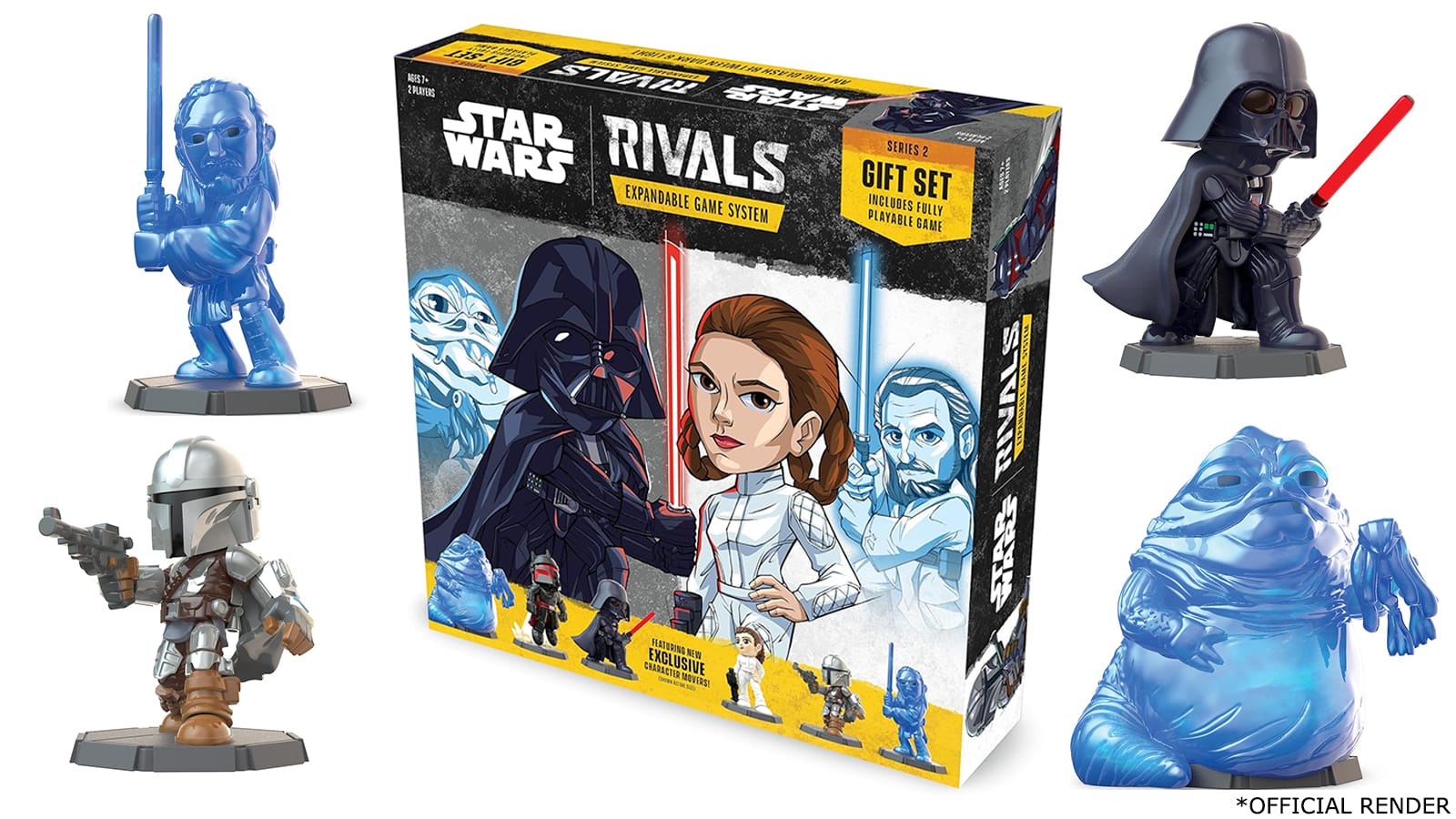

Today, the Premier sets are available to buy - Amazon, Walmart, GameStop all carry Series 1, and Target has Series 2, in addition to being available through some other online retailers. However, if anyone wants to find boosters for the game, short of spotting a lone booster here or there on the shelf, they’re relegated to the secondary market to get their boosters or outstanding figures; some of them go for up to 4x their booster price. Which really just means the game is not a family-friendly/accessible game anymore. In fact, as of writing this article, the Funko Games Star Wars Rivals page isn’t even active anymore, giving me a nice ’privacy error’ on my browser. It’s important to note here that the Series 2 product has yet to make it overseas, leaving all of the international fans at an even more severe loss.
The momentum is dead. With Star Wars: Unlimited having launched earlier this year, capturing the attention and audience of the Star Wars TCG crowd properly, I think it’s safe to say that Star Wars: Rivals is now a force ghost.
Conclusion
The evidence speaks for itself; if you had no idea this was a game, there are some good reasons why. I should be clear that I did manage to get a full complete set of both Series 1 and 2 (including the GenCon exclusives), and have thoroughly enjoyed playing the game. I write this not because I’m salty I didn’t get the pieces, but because there are family and friends I won’t be able to introduce the game to, so they can get excited about it and complete their own collection Now, it’s basically just a robust board game that I can play with people when they come over.
There may be a Series 3 that will come out. Maybe Goliath has worked through its changeover and found a way to get the game back on track and onto the shelf. It’s not like they ran out of characters to make; Star Wars has no shortage of them. This could all be wishful thinking on my part. I think all of the elements were there to make a great collectible Star Wars game for the family game, and maybe there still is.
The bitter truth is that there is a distinct lack of communication between Goliath Games and the public. There are no updates on development or production, no indication that there is more to come (or not), and no explanation as to what has happened. So important is the line of communication, in all things, but especially with a player base and a product that they are willing to throw a lot of money at. Even something as simple as saying ‘the game is in development hell’ is at least some kind of answer. For now, all that we can do is sit and wonder about the game that could have been.
Monday morning quarterbacks always think they’re the smartest in the room, but I do think there were a lot of missteps. In hindsight, and if this was my circus to run, the game should have been released over a series of expansions each based on the trilogies. An expansion would include 10 figures or so, at a reasonable sticker price. This way, it’s accessible to everyone and non-random so a consumer knows exactly what figures they’re getting. The whole point of the booster boxes is for a company to increase sales of its product. This is really hard to achieve when there’s no product. So why not just make it a boxed game set so that everyone can get and play their favorite characters with friends and family, similar to CMON’s Marvel: United? Without the Kickstarter exclusives, of course.
I want to get other people excited about playing games! Now, I have yet another Star Wars game that is no longer being produced. As a side note, I don’t like calling games ‘dead,’ because if people are still playing them then they can’t be dead. When no more expansions are being made the games should be called ‘complete,’ instead. So, now that Star Wars: Rivals is complete, it will fit nicely next to my collections of Star Wars: Destiny, Young Jedi, Star Wars TCG, Star Wars: X-wing Miniatures Game, Star Wars: Armada, Star Wars Imperial Assault… oof. Yeah, ok, so maybe there is a trend here.
What was otherwise a very promising, a very “easy to learn, tough to master”, Star Wars game is now just another footnote in a long history of games that may have been part of a bloated market (or exhausted IP) with a massive potential for growth. I know this is a game I can play with my nieces and nephews, because they will get to play with their favorite characters in a game that’s way more exciting than Candy Land.
At least you can buy that one.
